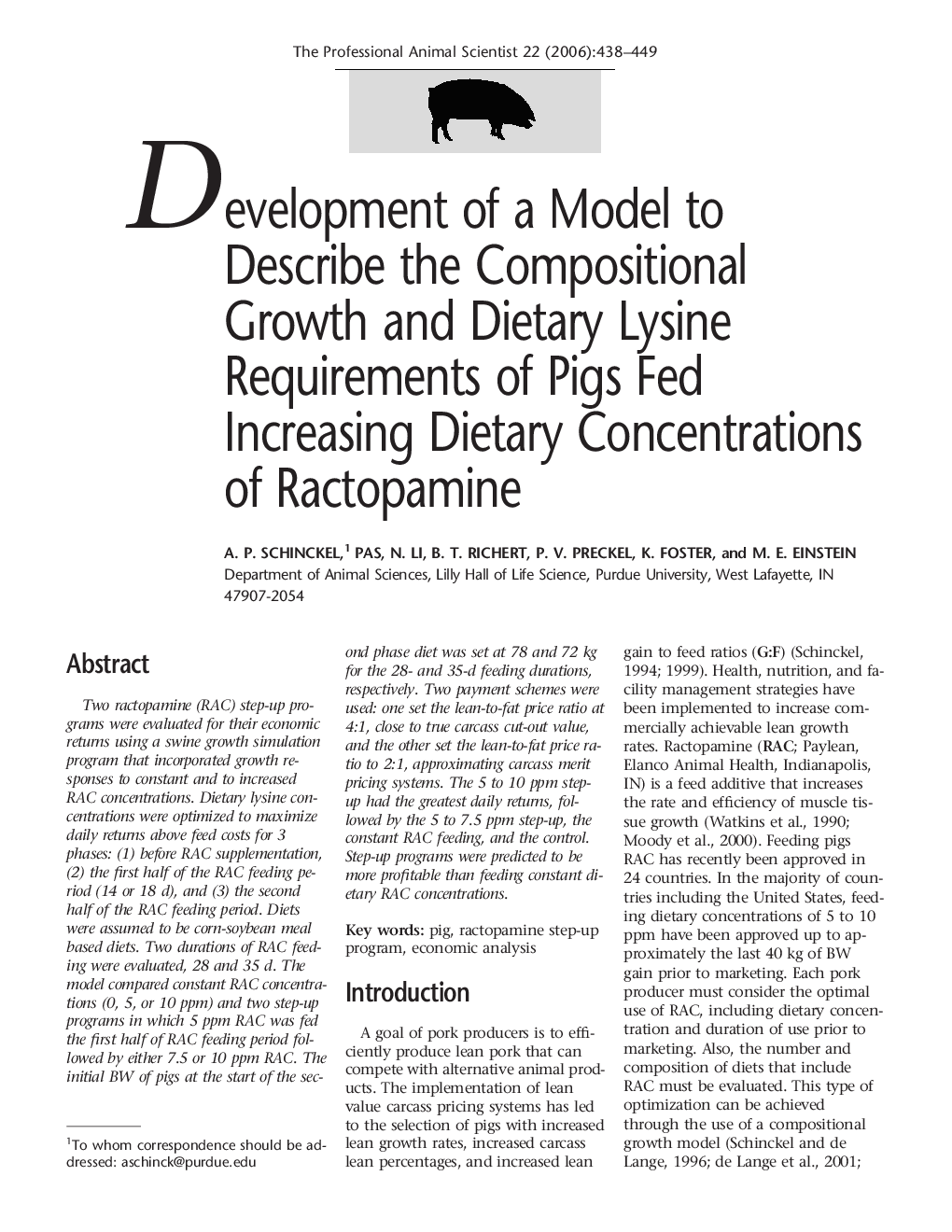| Article ID | Journal | Published Year | Pages | File Type |
|---|---|---|---|---|
| 2454668 | The Professional Animal Scientist | 2006 | 12 Pages |
Abstract
Two ractopamine (RAC) step-up programs were evaluated for their economic returns using a swine growth simulation program that incorporated growth responses to constant and to increased RAC concentrations. Dietary lysine concentrations were optimized to maximize daily returns above feed costs for 3 phases: (1) before RAC supplementation, (2) the first half of the RAC feeding period (14 or 18 d), and (3) the second half of the RAC feeding period. Diets were assumed to be corn-soybean meal based diets. Two durations of RAC feeding were evaluated, 28 and 35 d. The model compared constant RAC concentrations (0, 5, or 10 ppm) and two step-up programs in which 5Â ppm RAC was fed the first half of RAC feeding period followed by either 7.5 or 10Â ppm RAC. The initial BW of pigs at the start of the second phase diet was set at 78 and 72Â kg for the 28- and 35-d feeding durations, respectively. Two payment schemes were used: one set the lean-to-fat price ratio at 4:1, close to true carcass cut-out value, and the other set the lean-to-fat price ratio to 2:1, approximating carcass merit pricing systems. The 5 to 10Â ppm step-up had the greatest daily returns, followed by the 5 to 7.5Â ppm step-up, the constant RAC feeding, and the control. Step-up programs were predicted to be more profitable than feeding constant dietary RAC concentrations.
Keywords
Related Topics
Life Sciences
Agricultural and Biological Sciences
Animal Science and Zoology
Authors
A.P. PAS, N. Li, B.T. Richert, P.V. Preckel, K. Foster, M.E. Einstein,
